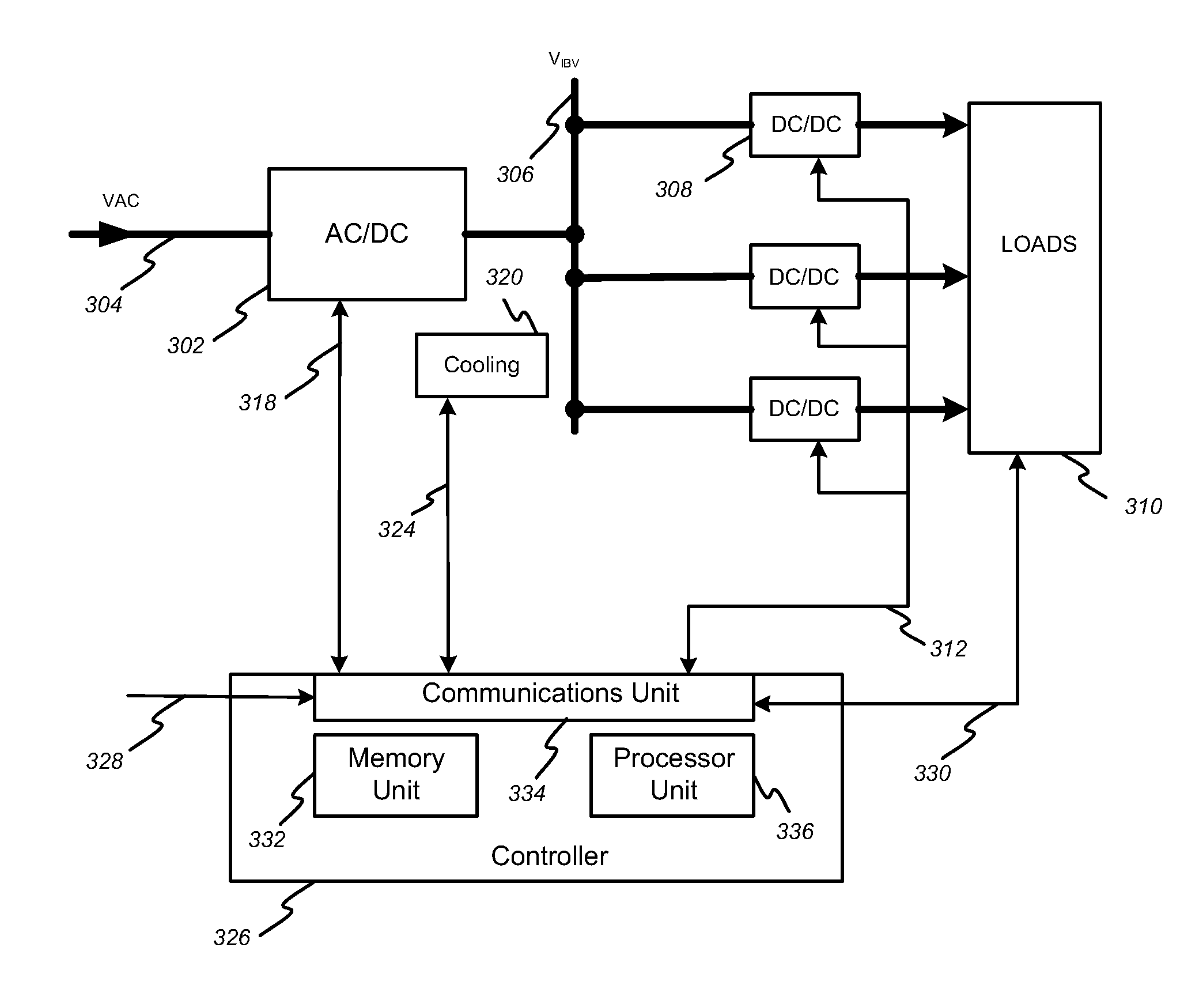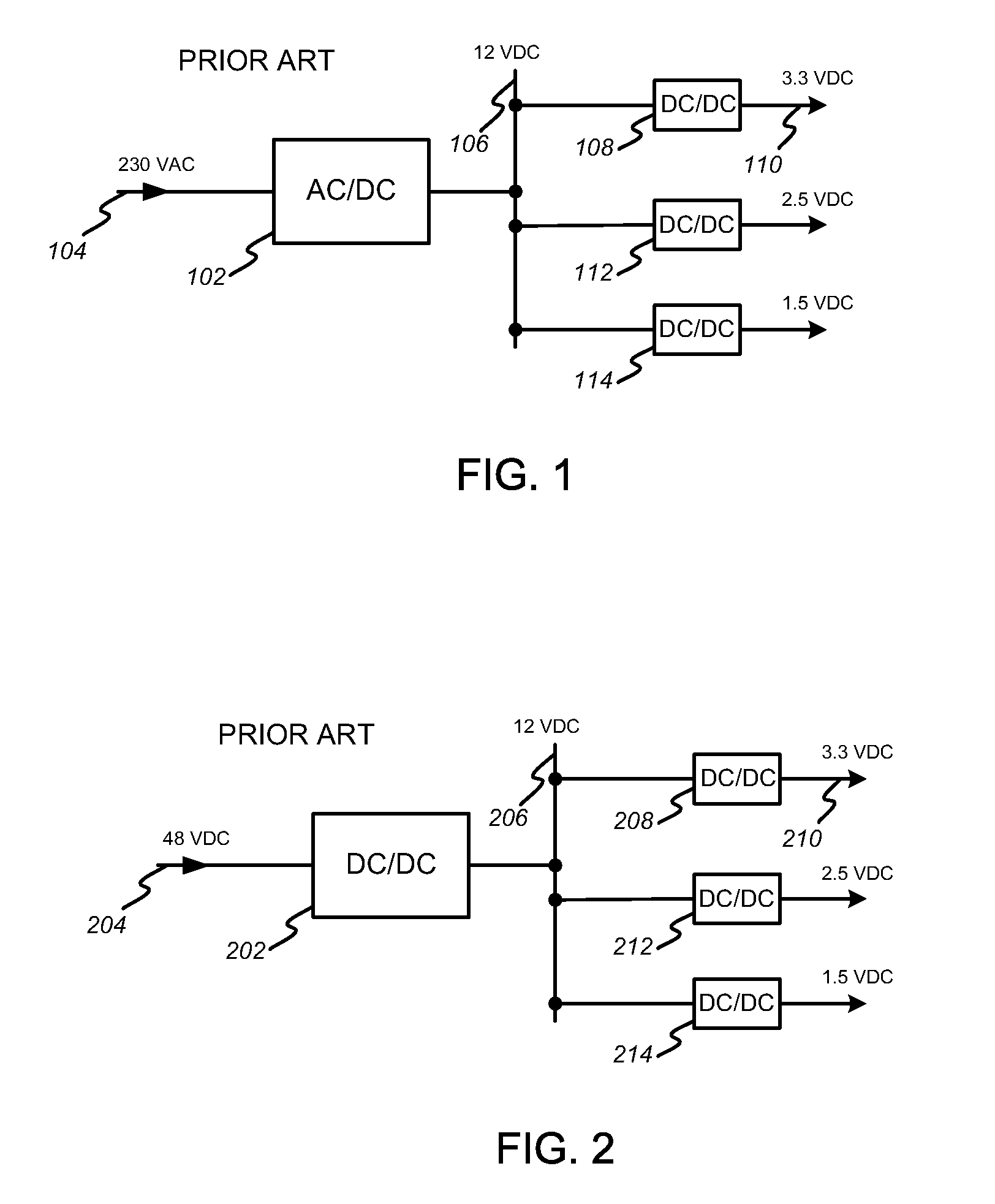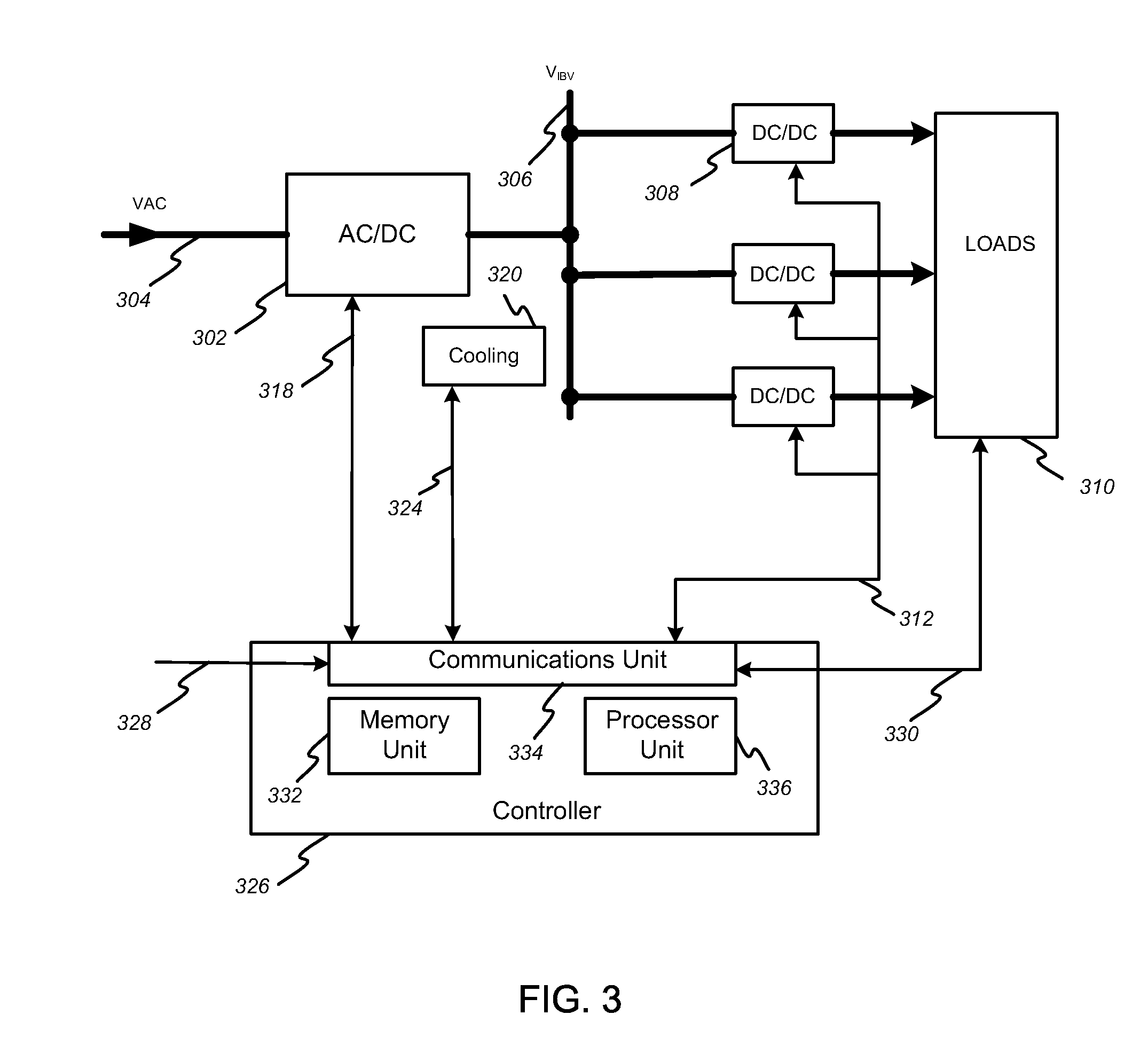Apparatus and method of optimizing power system efficiency using a power loss model
a power system and efficiency optimization technology, applied in the direction of electric variable regulation, process and machine control, instruments, etc., can solve the problems of reducing the efficiency of the primary converter, affecting the efficiency of the overall system, and raising the efficiency of the secondary regulator, so as to improve the efficiency of the overall subsystem, and maximize the efficiency of the subsystem
- Summary
- Abstract
- Description
- Claims
- Application Information
AI Technical Summary
Benefits of technology
Problems solved by technology
Method used
Image
Examples
Embodiment Construction
[0027]The invention provides a power subsystem architecture and method of device power-loss characterization and monitoring that enables the dynamic control of operating set points to achieve high efficiency over a wide range of system operating conditions. In the detailed description that follows, like element numerals are used to indicate like elements appearing in one or more of the figures.
[0028]Conventional distributed power subsystem architectures are depicted in the block diagrams of FIGS. 1 and 2. In FIG. 1, an AC / DC converter 102 is used to convert a 230-volt primary AC bus 104 to a 12-volt intermediate DC bus 106. The intermediate bus 106 is distributed to secondary converters or regulators 108, 112, and 114 in order to generate the specific voltages, e.g. 110, required by the system components. FIG. 2 depicts a similar system that uses a primary DC / DC converter 202 to convert a 48-volt primary DC bus 204 to a 12-volt intermediate bus 202. In both FIG. 1 and FIG. 2, the vo...
PUM
 Login to View More
Login to View More Abstract
Description
Claims
Application Information
 Login to View More
Login to View More - R&D
- Intellectual Property
- Life Sciences
- Materials
- Tech Scout
- Unparalleled Data Quality
- Higher Quality Content
- 60% Fewer Hallucinations
Browse by: Latest US Patents, China's latest patents, Technical Efficacy Thesaurus, Application Domain, Technology Topic, Popular Technical Reports.
© 2025 PatSnap. All rights reserved.Legal|Privacy policy|Modern Slavery Act Transparency Statement|Sitemap|About US| Contact US: help@patsnap.com



